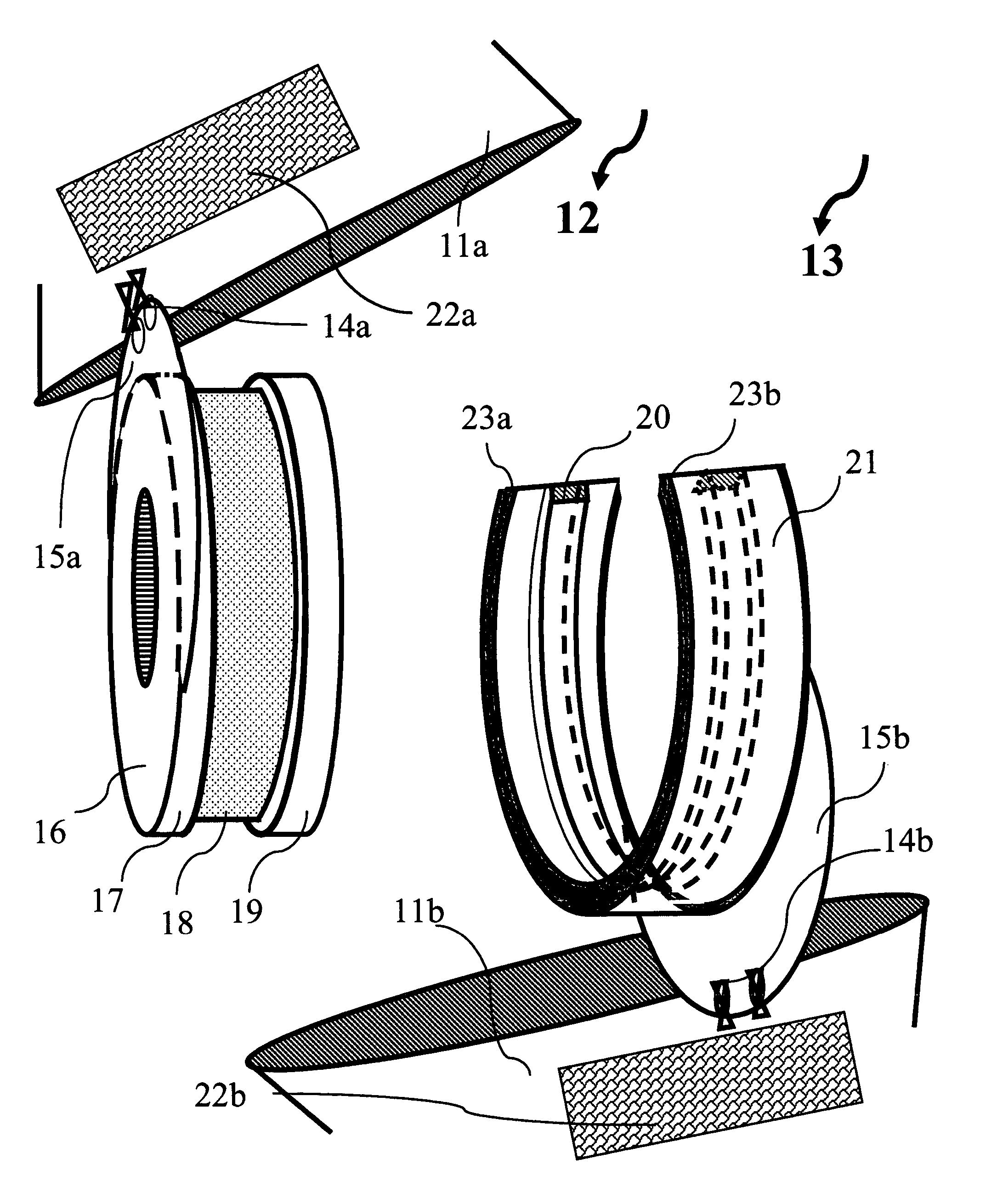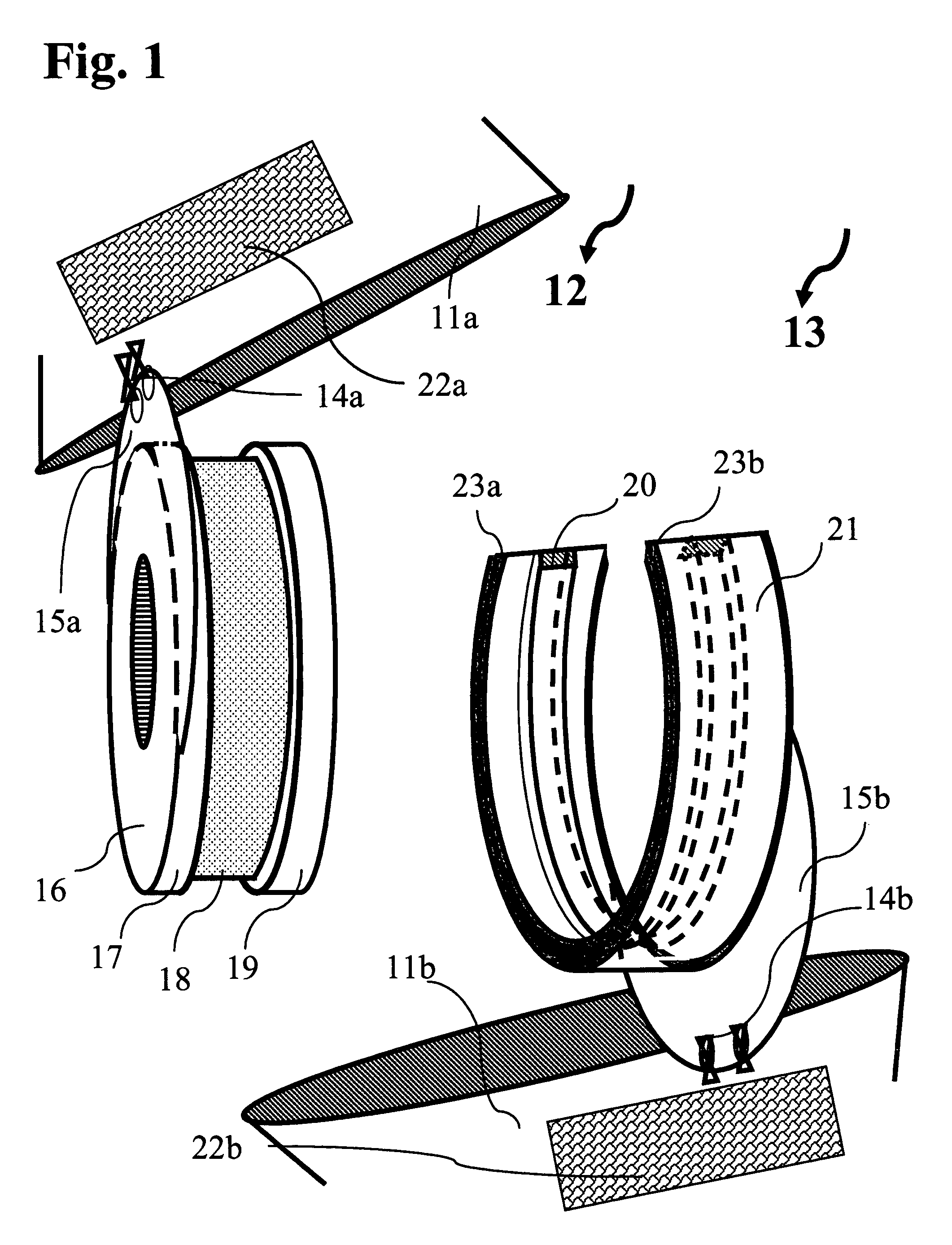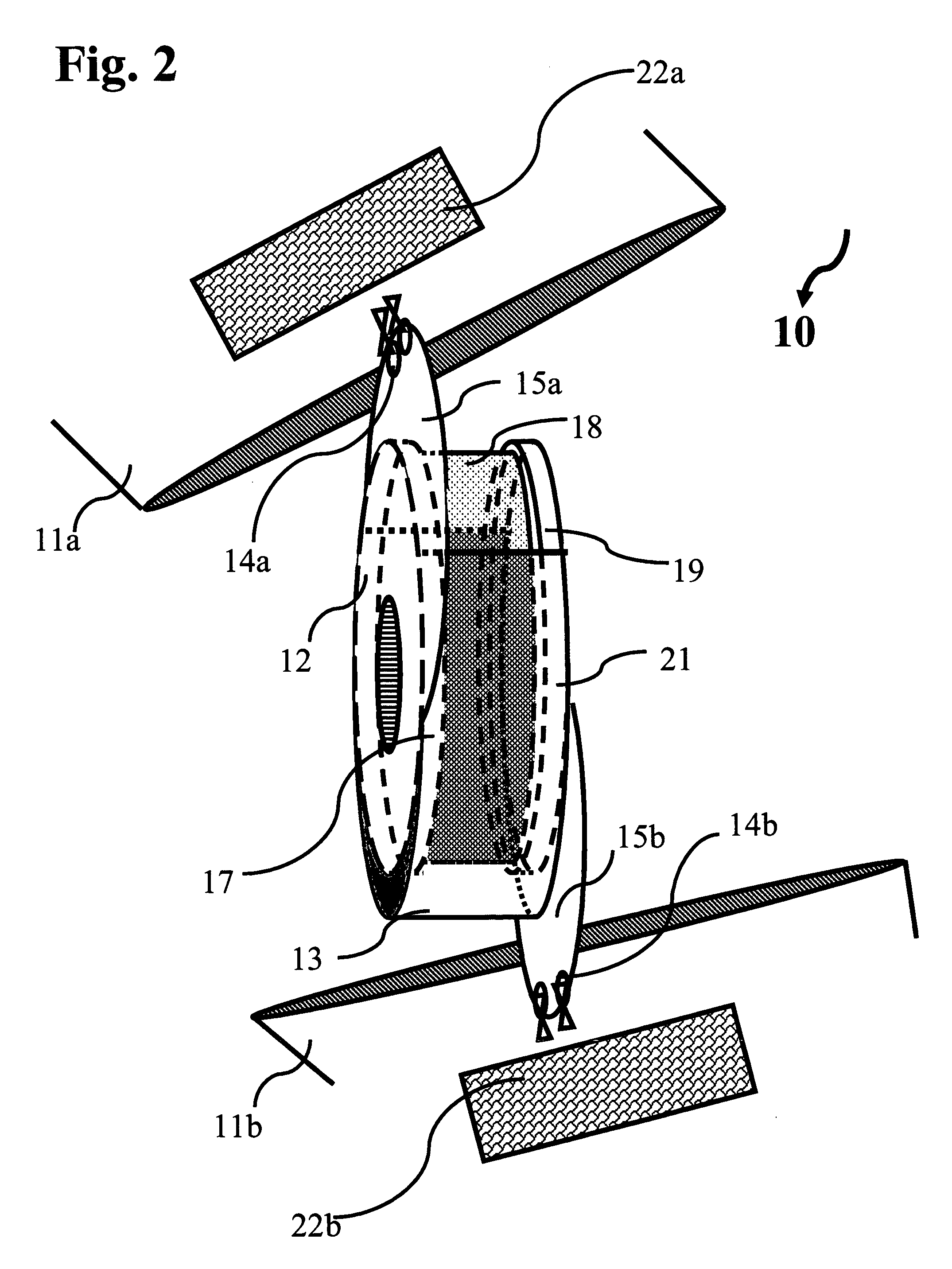Laundering of small frequently worn articles of clothing can become a
time consuming event.
In particular, articles that come in pairs, especially
socks, commonly need to be replaced as one of a pair is lost during laundering or misplaced after wearing.
The misplacement of these clothing articles results in
consumer costs by way of replacement expenses, time, and aggravation.
Storing small frequently worn articles of clothing in an organized manner can also be difficult as these articles are prone to intermingling with other articles.
In particularly, socks that are neatly folded and paired together in a drawer frequently become separated and disheveled when a person rifles through the drawer to retrieve another item.
Frequently, consumers spend unnecessary time sorting, separating, and
pairing these articles of clothing after laundering.
These fastening mechanisms do not provide optimal unification of the articles of clothing during the laundering process and share many disadvantages.
One major
disadvantage of the fastening mechanisms heretofore devised and utilized is their propensity towards disengagement during the laundering process.
Specifically, snap-type fastening means are inherently susceptible to separation during laundering as extreme forces are applied in opposing directions.
Another key drawback associated with the heretofore devised and utilized fastening mechanisms is the entanglement, and even tearing, of the joined articles of clothing and other clothing during laundering.
Tongue-and-groove type fastening means heretofore devised and utilized are particularly vulnerable to such entanglements.
Breakage of the fastening mechanisms or even tearing of the articles typically result due to the inflexible and flush attachment configuration of these tongue-and-groove mechanisms to the articles.
Flush attachment of the fastener components to each of the corresponding articles results in a concentration of force at the local attachment point.
Dispersion of this force is levied resulting in breakage of the mechanism, disengagement, or in extreme cases tearing of the article.
Flush attachment of the mechanism components to the articles of clothing not only cause disengagement and breakage, but also contribute to inefficient laundering.
As a result, proper cleaning in the attachment regions is impaired, as the laundering detergents and water forces are not properly exposed to the attachment region.
Another
disadvantage of conventional article
pairing fastening mechanisms is difficulty of concealing them from view when the articles are being worn.
During wear, these fastening mechanisms are plainly visible and, due to frequent bodily contact, irritate the wearer's
skin or snag articles of overlaying clothing.
Problems associated with the discomfort and even injury, caused when such mechanisms make intimate contact with the wearer's person, are readily apparent.
These devices do not join two articles of clothing together, but act unilaterally with one of the articles of the pair.
The square-shaped components inherently present four sharp corner points, which not only attribute to the
snagging of clothing, but may even cause physically injury to the wearer.
The snap-type design is especially vulnerable to disengagement during laundering due to weak
interlocking capabilities.
Furthermore, in each the forgoing patent disclosures, attachment of the fastening components brings a substantial portion thereof flush against the material of the clothing articles.
With such an attachment configuration, disengagement, breakage, and inefficient laundering frequently result.
None of the above fastening mechanisms provide for a concealment pocket in order to provide for the articles to be worn in an optionally protective inconspicuous manner, and therefore such mechanisms are prone towards catching on the wearer's person or overlaid clothing.
The heretofore disclosed and utilized fastener mechanisms for the releasable joining of articles of clothing, such as socks, do not disclose a fastener mechanism that allows omni-directional entry, and
interlocking properties through use of a disk-shaped member and a u-shaped aperture.
None of the conventional mechanisms utilize a disk-shaped member inserted into a u-shaped member.
Moreover, none of the fastening mechanisms heretofore disclosed utilize an optional decorative or inconspicuous protective concealment pocket for the fastening components.
 Login to View More
Login to View More  Login to View More
Login to View More 


